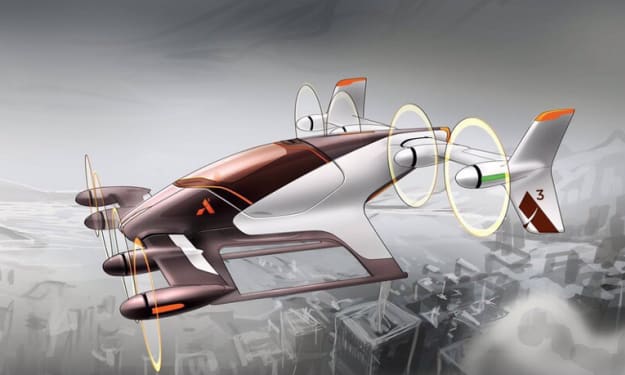Welcome to the Matrix
Evidence builds for holographic universe theory.

Just like a 3-dimensional Princess Leia burst out of a 2-dimensional piece of film and just like that 3-D image pops off the 2-D sticker on your credit card, evidence is growing that the universe around you may be a 3-dimensional bubble emanating out of a 2-dimensional surface.
It may sound like something from the Matrix trilogy, or the ramblings of an Eastern mystic who tells you everything is Maya, but a team of international researchers say they found evidence that reality is a hologram by studying irregularities in the cosmic microwave background, according to the University of Southampton. The cosmic microwave background is the white noise remnants of the Big Bang.
In this study, the researcher say there is substantial evidence, in fact, in these cosmic microwave irregularities to back up the theory, usually referred to as the holographic universe theory. It may actually be easier to find evidence than it is to try to explain just what the holographic universe theory actually is.
"Imagine that everything you see, feel and hear in three dimensions (and your perception of time) in fact emanates from a flat two-dimensional field,” says Kostas Skenderis, professor of mathematical sciences, University of Southampton. “The idea is similar to that of ordinary holograms where a three-dimensional image is encoded in a two-dimensional surface, such as in the hologram on a credit card. However, this time, the entire universe is encoded,"
Scientists have speculated about the holographic universe theory since the 1990s. Physicist Juan Maldacena was probably the first to explore the idea that the universe could be a hologram -- or hologram-like -- in 1997. He saw a correspondence between gravitational theories and quantum field theories in spaces with one fewer dimension on the other. Since Maldacena’s realization, physicists have kept on debating whether they weren't part of a hologram, while astrophysicists have scanned the heavens for signs that the principle had experimental legs, at least 3-D legs.
Experimental evidence was tougher to find, however. Things are now changing. Better telescopes with much finer resolution and sensing devices -- along with computers that can process large amounts of data -- are now giving researchers the ability to detect and process large amounts of information, particularly information that hides in the cosmic microwave background. In this study, the team took that information and compared them to networks of features in the data and quantum field theory. And, it turns out, the simplest quantum field theories may explain the cosmological observations of the early universe.
The study is a hopeful sign that we are now gaining traction for a theory that may help us cinch up one of the most troublesome, sticky aspects of physics. While Einstein’s and Newton’s theories are precise in helping us understand the very big, they are lousy at figuring out the very small, namely quantum mechanics. Quantum mechanics, on the other hand, is one of the most accurate ways to predict action at very small levels, but its implications for the very big -- entanglement and superposition, for instance -- is just too weird for the very big.
It may get weirder, however.
“Holography is a huge leap forward in the way we think about the structure and creation of the universe,” says Skenderis. "Einstein's theory of general relativity explains almost everything large scale in the universe very well, but starts to unravel when examining its origins and mechanisms at quantum level. Scientists have been working for decades to combine Einstein's theory of gravity and quantum theory. Some believe the concept of a holographic universe has the potential to reconcile the two. I hope our research takes us another step towards this."
This is just the first step, as the researcher cautions. More experiments will follow and the data collected in this study must be confirmed. However, with improvements in technology continuing, it’s likely that more findings will be coming to either prove or disprove the holographic universe theory.
The team included researchers from the University of Southampton, United Kingdom; University of Waterloo and Perimeter Institute, both in Canada and INFN, Lecce and the University of Salento, both in Italy. They published their findings in the journal Physical Review Letters.
About the Creator
Matt Swayne
I'm a science and research writer with an interest in future and fringe technologies.
Reformed journalist and marketer.






Comments
There are no comments for this story
Be the first to respond and start the conversation.